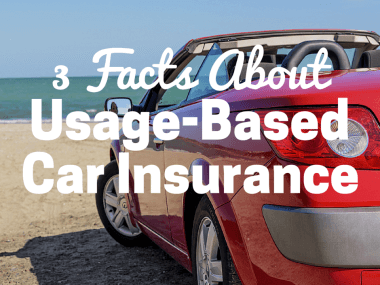7 Tricks to Save Money on Auto Insurance
Auto insurance can be expensive and confusing…unless you know some insider tricks! Money Girl, Laura Adams, has 7 tips to stay compliant and safe, while also cutting your auto insurance costs.
If you own or lease a vehicle, almost every state requires you to have some amount of auto insurance. Even if you drive, but don’t own a vehicle, you should probably have a non-owners auto policy, but that’s for another time.
Problem is, auto insurance can be expensive and confusing. Fortunately, there are insider tricks to staying compliant and safe, while cutting costs. In this episode, I’ll cover 7 ways to reduce the cost of auto insurance without jeopardizing your financial security.
7 Tricks to Save Money on Auto Insurance
- Don’t pay for what you don’t need.
- Get familiar with potential discounts.
- Consider pay-as-you-drive programs.
- Increase your deductible.
- Bundle policies with the same insurer.
- Maintain good credit.
- Shop your policy regularly.
What Does Auto Insurance Cover?
Before covering each of these tips and tricks, here’s a brief explainer on auto insurance and why it’s so important to your financial well-being.
Auto insurance is a package of policies that protect you against financial loss in three main ways:
1. Liability protection pays for legal obligations as a result of a lawsuit. This is mandatory in most states, but the minimum amount you must carry varies significantly depending on where you live.
2. Medical protection pays for the cost of injuries to you or your passengers due to an accident. It can cover a variety of expenses, such as medical treatment, lost wages, and funeral expenses. Many states require medical coverage called personal injury protection (PIP).
3. Property protections are optional coverages that reimburse you for damage caused by you, others, or Mother Nature. You can purchase comprehensive coverage for damage that isn’t the result of an accident with another vehicle, such as storm damage or theft. Collision coverage pays for damage due to an accident with another vehicle. Both comprehensive and collision come with a deductible, which is an amount you must pay before a claim is paid.
There are additional optional coverages that most policies offer, such as:
- Uninsured or underinsured motorist pays when you’re involved in a hit-and-run situation or an at-fault driver doesn’t have enough auto insurance to cover your loss.
- Rental car reimbursement pays for you to drive a rental while covered repairs are made to your vehicle.
- Glass replacement repairs or replaces your vehicle’s cracked or broken windows without applying a deductible.
States and lenders have different requirements for the types and amounts of auto coverage you must purchase. But that’s just one factor in how much you pay for car insurance. Your premium depends on many factors including the make and model year of your vehicle, your annual mileage, driving record, age, gender, and marital status.
While you may not be able to change any of these factors, here are seven tricks you can use to save money on your auto insurance:
Tip #1: Don’t Pay for What You Don’t Need
Now that you know the specific coverages that auto insurance gives you, carefully assess what you need. For instance, if you don’t have ample savings to repair or replace your car if it were damaged or stolen, then you definitely need collision and comprehensive.
But if you have an older car that’s paid for, then consider dropping collision and comprehensive. A good rule of thumb is not to buy those coverages unless the annual premium is 10% or less of your car’s Blue Book value. Otherwise, you’ll pay more in premiums than you could ever collect in benefits.
You need enough liability to cover the value of your real estate, savings, and non-retirement investments if you were sued after being in an accident where you hurt a passenger in your vehicle, another driver, or a pedestrian.
However, as I mentioned, liability is typically required, and for good reasons. If you were in a serious car accident, you could be sued for a huge amount of money. Each state has minimum requirements for how much liability coverage you must have—but it’s possible that you may need more.
For instance, if your state only requires $10,000 in medical costs and $10,000 for property damage liability, that may be way too little to protect your assets. If you were found at fault for medical expenses of $500,000, you’d be legally responsible to pay the remaining $490,000.
So, liability isn’t an expense to scrimp on. You need enough liability to cover the value of your real estate, savings, and non-retirement investments if you were sued after being in an accident where you hurt a passenger in your vehicle, another driver, or a pedestrian.
Tip #2: Research Potential Discounts
Insurance companies offer a variety of discounts, but they don’t always know if you qualify for them. Make sure to ask which discounts they offer and how you can reduce your premium.
Here are some common auto insurance discounts:
- Multi-vehicle for insuring more than one vehicle.
- Safe vehicle for having features such as anti-lock brakes and airbags.
- Safe driver for having a clean driving history with no accidents or completing a defensive driving course.
- Good student for high school or college-age drivers who maintain at least a “B” average.
- Occupation for working in certain fields such as the military, medicine, or education.
- Auto-pay for having your premium payment automatically deducted from your bank account.
- Loyalty for being a customer with your insurer for a certain number of years.
- Homeowner for owning a home, even if it isn’t covered by your auto insurance company.
Insurance companies offer a variety of discounts, but they don’t always know if you qualify for them.
Tip #3: Consider Pay-As-You-Drive Programs
Several nationwide auto insurers decrease your premium if you authorize them to track your driving habits through a monitoring device that you put in your vehicle.
These are known as usage-based or pay-as-you-drive insurance programs. If you meet safe driving standards for metrics—such as average mileage, speed, braking, cornering, and times of day that you drive—then you qualify for a discount.
Tip #4: Increase Your Deductible
A deductible is the amount of money you must pay before insurance benefits begin. For auto insurance, you typically can choose a deductible such as $200, $500 or $1,000. The higher your deductible, the lower your premium will be. However, the potential savings vary from state to state.
Also, remember that raising your deductible means you have to pay more of the cost of a covered claim. So never raise your deductible unless you’re confident that you’d have enough cash to cover it.
Tip #5: Bundle Policies With the Same Insurer
Many insurers reduce premiums if you have more than one type of coverage with them, such as auto and home or renters insurance. This is known as a multi-line policy or “bundling.”
Tip #6: Maintain Good Credit
You might be surprised to know that your credit plays a big factor in the rates you’re quoted for car insurance. Insurers in most states use credit scores as a tool to help gauge how risky a customer might be.
So that’s just one more reason to maintain good credit scores by paying your bills on time and managing credit accounts responsibly.
Tip #7: Shop Your Policy Regularly
I recommend shopping for auto insurance at least once a year. Rates change frequently and carriers have different criteria for evaluating you.
If you’ve never shopped your auto policy, or it’s been a while, taking a few minutes to get quotes is an easy way to save. Using free online comparison sites, such as Major Insurance and Policy Genius, makes the process quick and as hassle-free as possible.
After comparing quotes, you may find that your current insurance provider is giving you a great deal—but you won’t know until you shop.
Get More Money Girl!
To connect on social media, you’ll find Money Girl on Facebook, Twitter, and Google+. Also, if you’re not already subscribed to the Money Girl podcast on Apple Podcasts or the Stitcher app, both are free and make sure that you’ll get each new weekly episode as soon as it’s published on the web. The show is also on the Spotify mobile app! Click here to sign up for the free Money Girl Newsletter!
Red toy car image courtesy of Shutterstock.






